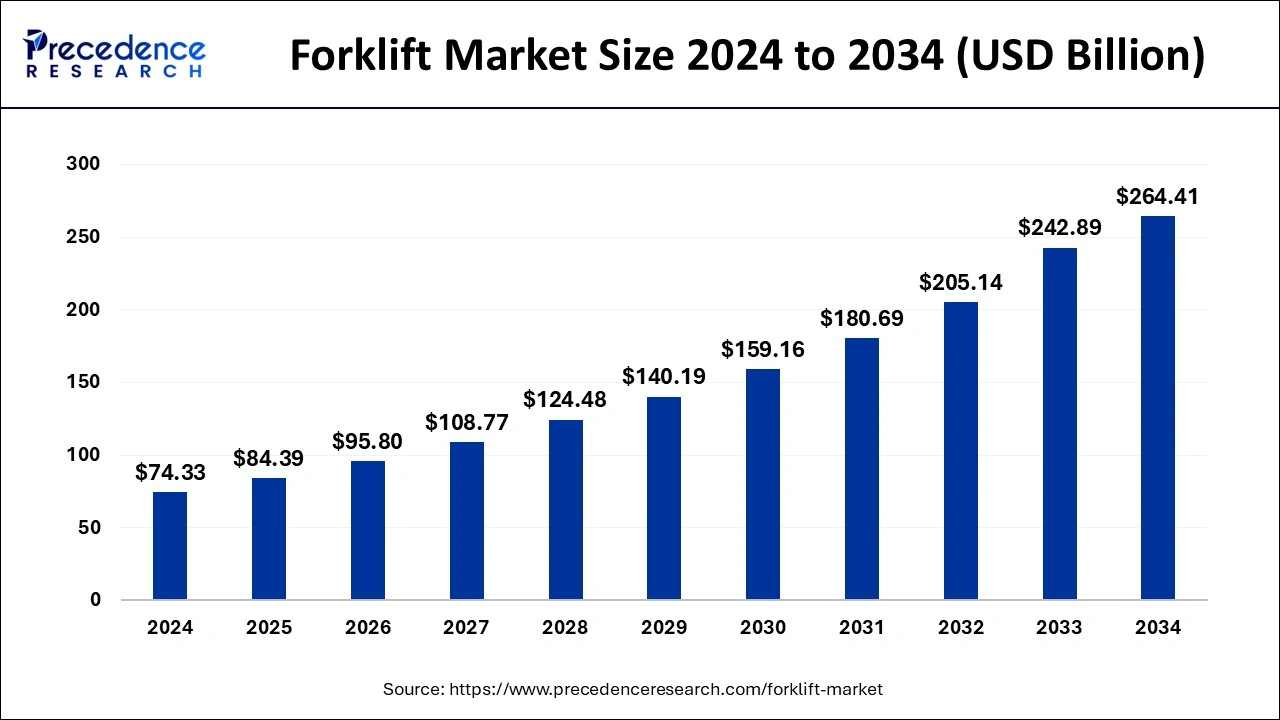Forklift Market to Reach USD 264.41 Billion by 2034.
The global Forklift Market, valued at USD 74.33 billion in 2024, is expected to reach USD 264.41 billion by 2034, growing at a CAGR of 13.53%.
Forklift Market Key Insights
- Regional Dominance: Asia-Pacific led the global market with a 48% share in 2024.
- By Class: The Class 3 segment held the highest market share at 44% in 2024.
- By Power Source: Electric forklifts accounted for the largest market share in 2024.
- By Load Capacity: The 5-15 ton segment contributed the highest market share in 2024.
- By Battery Type: Lead-acid batteries dominated with a 67% market share in 2024.
- By End-Use: The industrial sector captured over 25% of the market in 2024.

Market Drivers
Several factors are propelling the growth of the forklift market. The rapid expansion of the e-commerce sector has led to a surge in demand for efficient warehousing solutions, where forklifts are indispensable. Additionally, government investments in infrastructure development have bolstered the construction industry, subsequently increasing the need for material handling equipment. The push towards automation and the adoption of Industry 4.0 practices have also encouraged businesses to upgrade their forklift fleets to more advanced models.
Opportunities
The evolution of technology presents numerous opportunities within the forklift market. The development of fuel cell-powered forklifts offers a promising alternative to traditional battery-operated models, providing longer operational hours and faster refueling times. Emerging markets, particularly in Asia and Africa, are witnessing industrial growth, creating a burgeoning demand for material handling equipment. Companies that can offer innovative, efficient, and environmentally friendly forklift solutions are well-positioned to capitalize on these expanding markets.
Challenges
Despite the positive outlook, the forklift market faces certain challenges. The initial investment required for advanced forklifts, especially those equipped with cutting-edge technology, can be substantial, posing a barrier for small and medium-sized enterprises. Additionally, the integration of new technologies necessitates specialized training for operators, which can be time-consuming and costly. Economic fluctuations and supply chain disruptions also pose risks, potentially affecting production and delivery timelines.
Regional Insights
Regionally, the forklift market exhibits varied trends. In North America and Europe, there is a strong inclination towards electric forklifts, driven by stringent environmental regulations and a collective move towards sustainable practices. In contrast, the Asia-Pacific region, with its rapid industrialization and urbanization, represents the fastest-growing market for forklifts. Countries like China and India are investing heavily in infrastructure projects, thereby increasing the demand for robust material handling equipment.
Read Also: Electric Vehicle Charging as a Service Market
